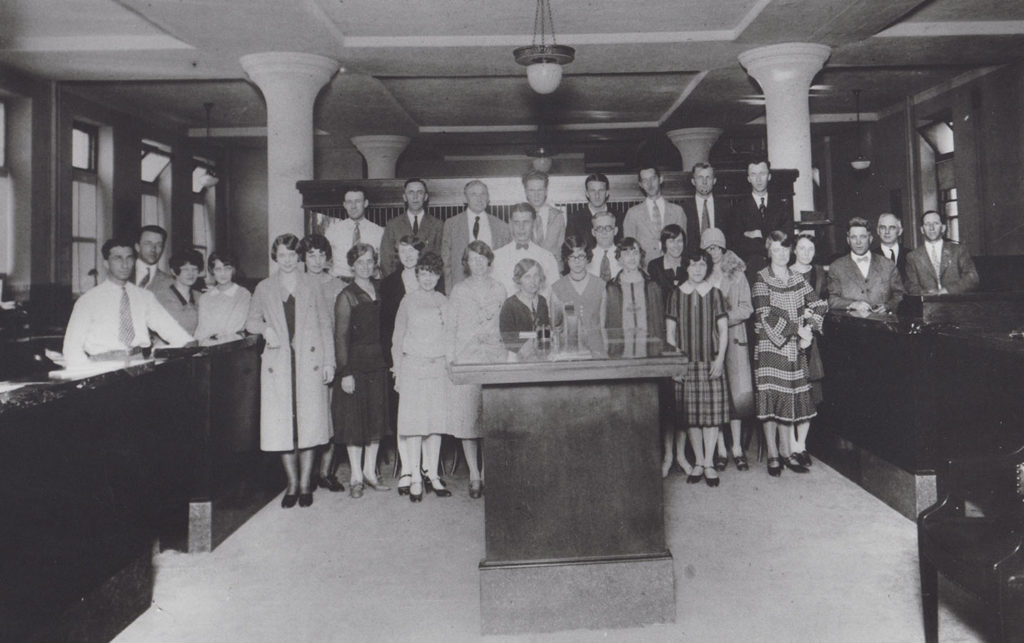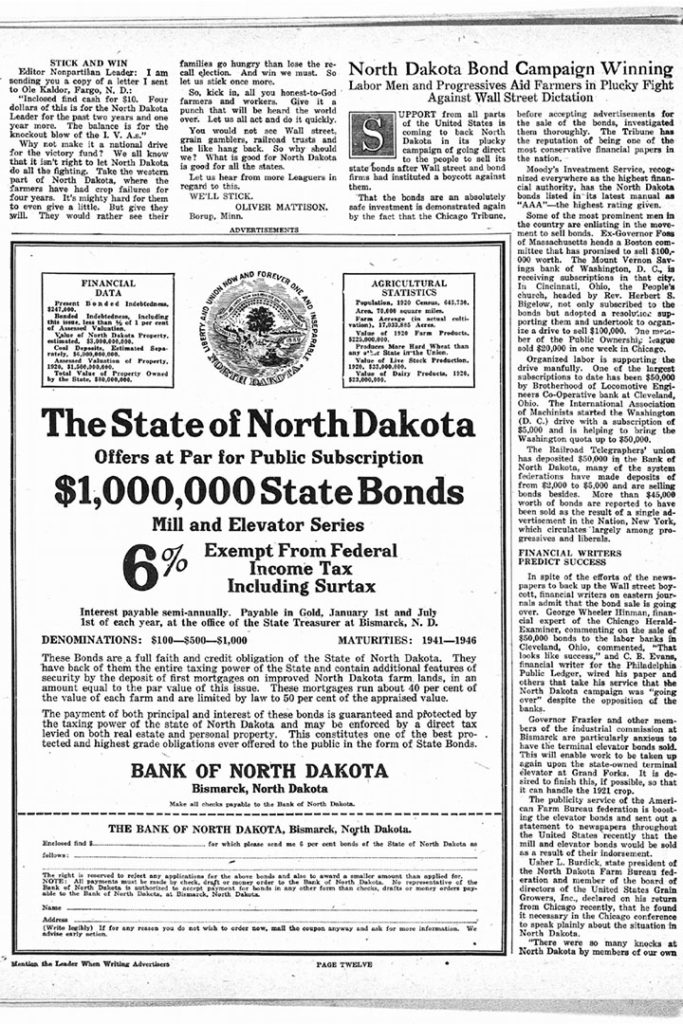
While the Bank of North Dakota attempted to establish itself on a firm and responsible foundation, difficulties arose from three fronts:
First, the League-owned Scandinavian American Bank of Fargo went into receivership in February 1921, after audits revealed a number of marginal and worthless loans, and inept management. Many people around the United States wrongly assumed that the bank in question was the experimental Bank of North Dakota (BND). Even among those who made the distinction, BND suffered by association.
The Scandinavian American Bank had been having significant troubles all the way back to 1919, two years after the NPL purchased it. It had survived those solvency and administrative crises for political, rather than sound financial, reasons.
With all the scandals, crises, publicity, open criticism, and political maneuvering since 1917, and now the collapse of the Fargo bank, the people of North Dakota had ample reason to doubt the financial sophistication of the Industrial Commission, the Bank’s managers and the League’s financial acumen. In other words, the continuing crisis of the League’s own bank caused many well-meaning Americans to doubt the credibility of the more ambitious state experiment in banking. The charge of general incompetence tainted all of the League’s enterprises.
Second, a number of outside observers, including Bill Langer who was a well-known NPL figure, believed that J.R. Waters, the Bank’s first manager, was incompetent. They called for his removal and used their assessment to discredit the whole idea of the bank.
Third, bond sales that would fund the state’s new industries proved to be a very considerable challenge.


